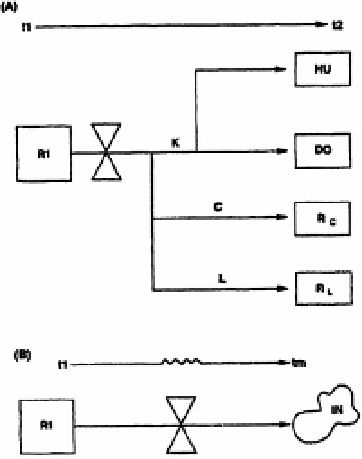Agriculture Reference
In-Depth Information
susceptible to leaching. Low concentrations of nutrients frequently limit growth
processes in soil and their conservation in organic forms is a key feature of decomposition.
In addition‚ the synchronisation of nutrient release through decomposition with plant
demand is of paramount importance in avoiding nutrient losses (Swift‚ 1984; van
Noordwijk and de Willigen‚ 1986).
1.1.2
PHYSICAL ASPECTS: RATES OF DISAPPEARANCE AND TRANSFERS OF
DECOMPOSING MATERIAL
Decomposition is the sum of three different processes (Figure IV. 2): i. Leaching‚ where-
by water-soluble materials are transported into and through the soil by percolating water;
ii. comminution‚ which is the physical reduction in the size of the plant material with lit-
tle chemical change but a large increase in surface area; iii. microbial and enzymatic
catabolism (mineralisation)‚ which results in the release of mineral components‚ accu-
mulation of resistant organic matter (HU) and the formation of decomposer tissue (DO).
At each step‚ a resource is transformed into a set of secondary resources which will then
undergo further transformation. Decomposition is therefore a series of sequential pro-
cesses during which a resource is progressively transformed through ingestion and
egestion by several successive organisms. As a result‚ the total ingestion of decomposing
materials by all organisms may substantially exceed the overall primary productivity of an
ecosystem. Decomposition may be physically characterised by the rate of disappearance
of the resource and the transfer of the material to different locations within the soil
system. Such transfers may increase the apparent rate of resource disappearance.


